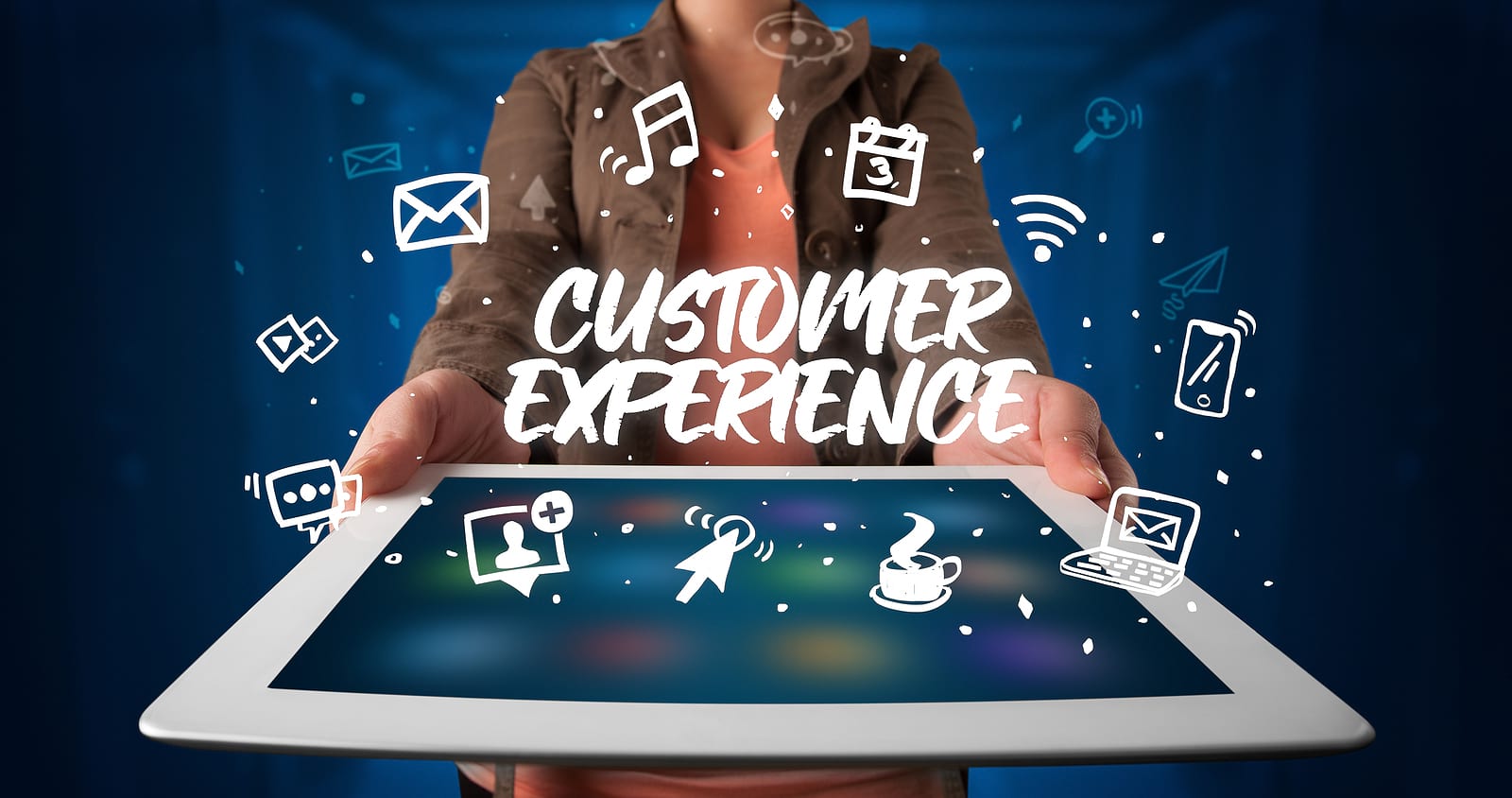How does b2b customer experience differ?
When we think about customer experience, our initial image is almost certainly of an individual customer making a purchase from a company – so-called b2c, Business to Customer relationship. For many of us though, our work is about delivering goods or services from our company to another company – that’s called b2b, Business to Business trading. These terms and the distinction is important in a range of situations, but they also apply, very much, to our thinking about customer experience.
So, do we have a b2b customer experience and a different kind of b2c customer experience? Well, in part, maybe, but actually, there is more overlap and commonality than diversity in the concerns and opportunities. In fact, b2c thinking can help us get b2b customer experience better, and b2b can help us with b2c too.
What is b2b Customer Experience?
In short, it is one business selling something to another, goods, services, or more likely a combination of both. Since it is a transaction and relationship between organizations, it has some features we might call ‘b2b characteristics’, such as:
- The players in the relationship (supplier and consumer) are acting on behalf of others, not themselves. Ultimately, success is reflected in the viability of the companies they work for, not individual performances.
- Focusing on what constitutes success can get blurred by the range of potential stakeholders in the consuming business. For example, are you more concerned with pleasing their engineers, their accountants, or some other part of the business?
- The typical b2b transaction is likely to be embedded in a lengthy supply chain, what you might call b2b2b2b2b2b…. and to get the experience as good and relevant as possible may well need some knowledge and understanding of the farther reaches of what might be an exceptionally complex supply chain.
B2C the last stage in the chain
By comparison, b2c is seen as the last stage in a chain, selling from an organization (so shared goals might still apply on that side) to an individual in sole control over the judgment of success and the experience. This perspective of b2b vs. b2c customer experience is a useful enough description of extremes that can help us focus on aspects and interpretations of customer experience. But it is a simplification. Simplifications are massively valuable when we start to think about a new concept. If we fail to understand the simplified version, it is immensely difficult to grasp the more complex realities that life will throw at us. (If you are interested in exploring that idea, read about ‘lies to children‘ – it’ll be worth your time). So, starting with these two distinct kinds of experience can be helpful as a beginning.
We do have much to learn from both approaches, whichever we are doing ourselves. B2c customer experience is generally held to be the driving force behind customer experience initiatives and innovations. In the retail environment, the collection, analysis, and application of feedback from general public customers on their direct and indirect experience has made that customer experience the de-facto battleground between the big players, and improvements in the overall customer experience has become the weapon of choice for most large players – and many small ones too who see an opportunity for ‘small is beautiful’ shaping of their service delivery to a sectioned and more easily targeted customer environment.
Still catching up, b2b customer experience that focuses on communication between the more amorphous corporate entities has much to learn. One of the major aspects in b2b held to be different is the need to simultaneously target a range of customers, their preferences, and concerns – thus forcing a need for multiple experience considerations or a less focused approach to achieve broader satisfaction. But b2c supply is – more and more – seeing the need to hit multiple targets. This is more obvious in the larger kind of purchases a consumer may make – houses, cars, holidays, etc. Here the supplier is often selling to a family, and focusing on a single, apparent, decision-maker is to miss opportunities to influence influencers. The best holidays salesmen know they must sell a holiday to parents and children – and rarely with the same temptations or techniques. The involvement of a wider family influence is very compatible with online purchasing; putting your view across to someone sitting next to you with their tablet or notebook is easier and more likely than going along to the store with them to put your opinions into the mix.
People buy from People
Just as important, or perhaps even more so, the simplistic view of b2c selling to an individual has a major lesson for b2b supply. However big the companies involved, it is still true that, by and large, ‘people buy from people.’ No matter how much data and logic is delivered to support buying decisions, individuals’ preferences and support are key to most customer-supplier relationships that drive customer experience. One of the key tenets to creating the best possible customer experience is to know the individuals involved, their concerns, preferences, predilections, and perceptiveness, which brings us neatly to the new term that is – for many – replacing b2b and b2c as the key focus … b2h: business to human customer experience. The key really is in the word ‘experience.’ Neither processes, procedures, or technology experience things – nor even the best AI yet. It’s human beings that experience things, and people that consciously or unconsciously recognize a customer experience as good or bad – and the goodwill drive them to stay and buy more and tell others. The bad will drive them away. The prime focus has to be: know who you are delivering to, understand them, and tailor their experience accordingly. Even in our ever more technological world, the customer experience future is still human-shaped.
So, do we have a b2b customer experience and a different kind of b2c customer experience? Well, in part, maybe, but actually, there is more overlap and commonality than diversity in the concerns and opportunities. In fact, b2c thinking can help us get b2b customer experience better, and b2b can help us with b2c too.
What is b2b Customer Experience?
In short, it is one business selling something to another, goods, services, or more likely a combination of both. Since it is a transaction and relationship between organizations, it has some features we might call ‘b2b characteristics’, such as:
- The players in the relationship (supplier and consumer) are acting on behalf of others, not themselves. Ultimately, success is reflected in the viability of the companies they work for, not individual performances.
- Focusing on what constitutes success can get blurred by the range of potential stakeholders in the consuming business. For example, are you more concerned with pleasing their engineers, their accountants, or some other part of the business?
- The typical b2b transaction is likely to be embedded in a lengthy supply chain, what you might call b2b2b2b2b2b…. and to get the experience as good and relevant as possible may well need some knowledge and understanding of the farther reaches of what might be an exceptionally complex supply chain.
B2C the last stage in the chain
By comparison, b2c is seen as the last stage in a chain, selling from an organization (so shared goals might still apply on that side) to an individual in sole control over the judgment of success and the experience. This perspective of b2b vs. b2c customer experience is a useful enough description of extremes that can help us focus on aspects and interpretations of customer experience. But it is a simplification. Simplifications are massively valuable when we start to think about a new concept. If we fail to understand the simplified version, it is immensely difficult to grasp the more complex realities that life will throw at us. (If you are interested in exploring that idea, read about ‘lies to children‘ – it’ll be worth your time). So, starting with these two distinct kinds of experience can be helpful as a beginning.
We do have much to learn from both approaches, whichever we are doing ourselves. B2c customer experience is generally held to be the driving force behind customer experience initiatives and innovations. In the retail environment, the collection, analysis, and application of feedback from general public customers on their direct and indirect experience has made that customer experience the de-facto battleground between the big players, and improvements in the overall customer experience has become the weapon of choice for most large players – and many small ones too who see an opportunity for ‘small is beautiful’ shaping of their service delivery to a sectioned and more easily targeted customer environment.
Still catching up, b2b customer experience that focuses on communication between the more amorphous corporate entities has much to learn. One of the major aspects in b2b held to be different is the need to simultaneously target a range of customers, their preferences, and concerns – thus forcing a need for multiple experience considerations or a less focused approach to achieve broader satisfaction. But b2c supply is – more and more – seeing the need to hit multiple targets. This is more obvious in the larger kind of purchases a consumer may make – houses, cars, holidays, etc. Here the supplier is often selling to a family, and focusing on a single, apparent, decision-maker is to miss opportunities to influence influencers. The best holidays salesmen know they must sell a holiday to parents and children – and rarely with the same temptations or techniques. The involvement of a wider family influence is very compatible with online purchasing; putting your view across to someone sitting next to you with their tablet or notebook is easier and more likely than going along to the store with them to put your opinions into the mix.
People buy from People
Just as important, or perhaps even more so, the simplistic view of b2c selling to an individual has a major lesson for b2b supply. However big the companies involved, it is still true that, by and large, ‘people buy from people.’ No matter how much data and logic is delivered to support buying decisions, individuals’ preferences and support are key to most customer-supplier relationships that drive customer experience. One of the key tenets to creating the best possible customer experience is to know the individuals involved, their concerns, preferences, predilections, and perceptiveness, which brings us neatly to the new term that is – for many – replacing b2b and b2c as the key focus … b2h: business to human customer experience. The key really is in the word ‘experience.’ Neither processes, procedures, or technology experience things – nor even the best AI yet. It’s human beings that experience things, and people that consciously or unconsciously recognize a customer experience as good or bad – and the goodwill drive them to stay and buy more and tell others. The bad will drive them away. The prime focus has to be: know who you are delivering to, understand them, and tailor their experience accordingly. Even in our ever more technological world, the customer experience future is still human-shaped.




